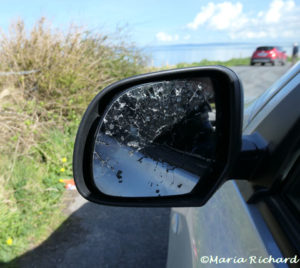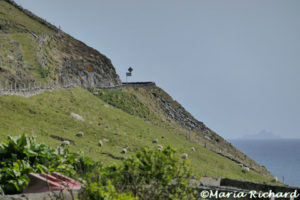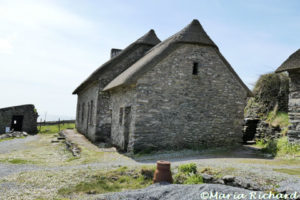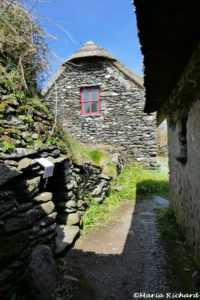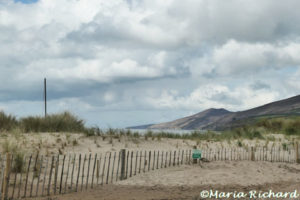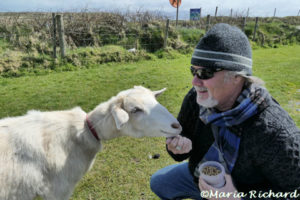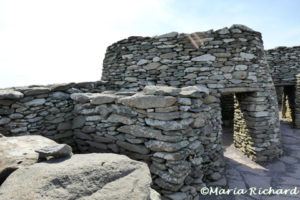I spent most of my time in Morocco at Tangier. My hotel was in the kashbah, the fortified upper part of the old city overlooking the port. For first rate service, and a plentiful breakfast on a rooftop terrace, stay at La Maison Blanche. (http://www.lamaisonblanchetanger.com/)
My top-floor room had a window overlooking other rooftops. What struck me most while looking at the other rooftops was the contrasts. Some roofs are quite inviting while others have practical purposes – hanging clothes and storage.

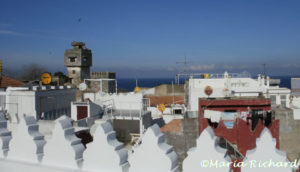

Two ferry companies service the Tarifa, Spain – Tangier route. The 40-minute crossing was smooth and uneventful. An officer stamps passports during the trip. All I needed to do when I landed in Tangier was have my luggage scanned.
In many ways, staying in the Tangier kashbah is like a stay in a European town. Instead of church bells in the morning, the call to prayer echoes through the air several times a day. Instead of a vegetable vendor calling “Frutta fresca” and “Vendura fresche”, a fish merchant pushes a cart laden with fish every morning. His call is the Arabic equivalent of “fresh fish, get your fresh fish here”.
Two of the three nights I ate dinner in the kasbah. The first night, I dined on food from the El Morocco Club. The club was packed so a server delivered dinner to my hotel. I enjoyed every bite of my meal. El Morocco serves French Moroccan cuisine and liquor.
The second night, I ate in a small restaurant which appeared to be the first floor of someone’s home. The chef/owner arrived in Tangier years ago. Her chicken tangine is wonderful and includes vegetables I have never seen before.
On my last full day in Tangier, my guide took me to Assilah. We drove along the coast. The beaches on the route are deserted with some pockets of development. My guide explained that Morocco doesn’t have a beach culture. Many owners of beach estates are from other countries. Stops along the way included Cape Spartel lighthouse and the Cave of Hercules. Unfortunately, my camera card went bad during the ride to Assilah and I do not have any photos from the ride.
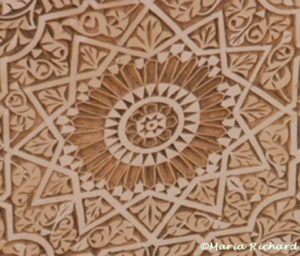
My guide found a camera shop outside the walled town. They were able to transfer the images from the defective card to a new card. Onto the walled town!
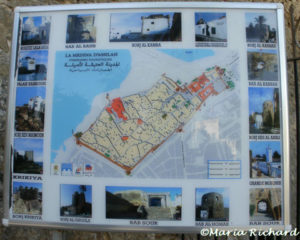
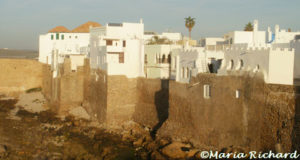
The streets of the Assilah were almost empty that December Saturday.
Every year, Assilah hosts an international mural competition. The murals remain until the next competition. Many of the murals are colorful.

I found the Mujaheddin Graveyard very interesting. Instead of gravestones, each grave is covered with tiles. Each family has a particular tile pattern.

Looking back on this trip, there were times when my lack of local language skills made me uneasy. When I got over my discomfort and relaxed a bit, I enjoyed the trip. In reality, my greatest discomfort occurred on my return to Europe. Security was very tight due to a recent incident. The ferry passengers stood single file waiting to see passport control. Armed guards scrutinized the people in line. Sadly, security is necessary precaution.
I would like to visit Morocco again…ride a camel into the desert and sleep in a Berber tent…see Marrakesh, Casa Blanca and Chefchaouen.



